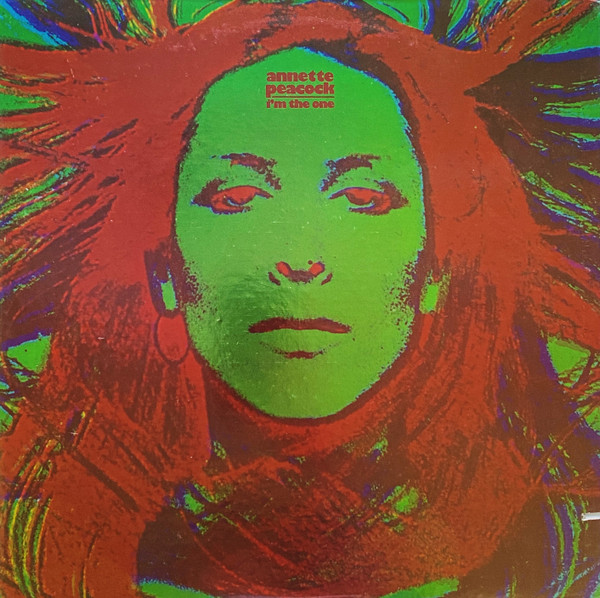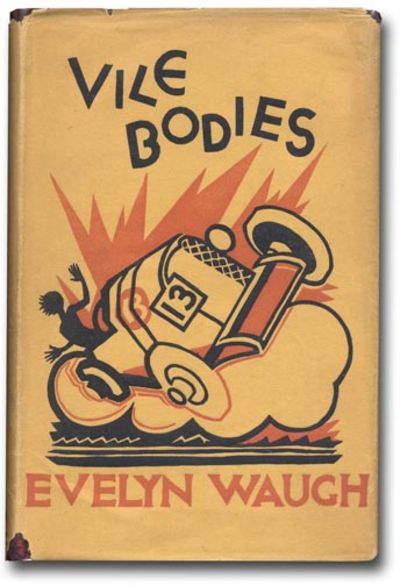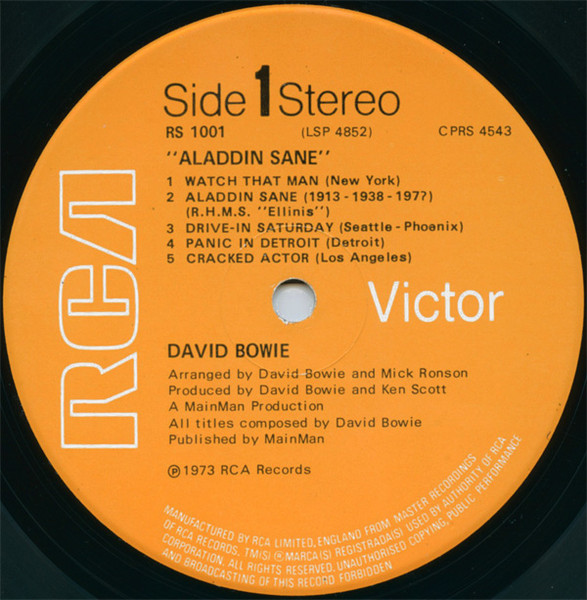David Bowie’s magpie mentality was on high alert during the making of Aladdin Sane. Groovy Times reveals the sources of inspiration behind the great man’s sixth studio album
After the mainstream breakthrough of 1972’s Ziggy Stardust, the pressure was on David Bowie to cement his status as a regular superstar. Rather than take the easy route, the follow-up Aladdin Sane was an archly schizoid slice of vinyl, made up of hard-edged glam stompers and Weimar-era theatrical ballads, all adorned liberally with plonking splashes of avant-garde jazz.
Throughout his career Bowie was famed for his happy knack of musical appropriation and his adept talent for borrowing is evident on Aladdin Sane. To mark 50 years and a bit since its release on April 20, 1973, Aladdin Sane has been reissued with a half-speed master from the original tapes along with a picture disc version. Here are the places our trip down the Aladdin Sane rabbit hole took us…
Exile On Main Street
The Rolling Stones
Rolling Stones Records (1972)
The Stones’ ramshackle double was released a year before Aladdin Sane and its mucky fingerprints are evident all over it. Nowhere more so than side one’s pair of loose bluesy rockers, Watch That Man and Panic In Detroit. Bowie had been a Stones enthusiast since the early 60s and his admiration extended to side two, track three’s campy cover of Let’s Spend The Night Together. The release of identikit-Stones Rebel Rebel as the lead single from Diamond Dogs in Feb 1974 was further evidence of Bowie’s lingering Jagger flirtation.
New York Dolls
New York Dolls
Mercury (1973)
Written largely on the road during his 1972 tour of the US, Bowie described Aladdin Sane as “Ziggy goes to America”. One of the kindred acts he encountered on his trip across the pond were the New York Dolls and while the proto-punks’ debut hit the racks after Aladdin Sane they are no less of an influence. Bowie regularly checked out the Doll’s sleazy live shows, specifically at the Mercer Arts Center, during his time in New York – and he liked what he heard. Bowie namechecks original Doll’s drummer Billy Murcia on Time (“Demanding Billy Dolls/ And other friends of mine”). Murcia overdosed on heroin, aged 21, while on tour in the UK.
I’m The One
Annette Peacock
RCA (1972)
Released in January 1972, experimental composer Annette Peacock’s solo debut was a pioneering mix of jazz, blues, spoken word and electronic music. Bowie and Mick Ronson were both big admirers of the record, so much so that Peacock was invited to take part in the Aladdin Sane recording sessions. A request their RCA label mate declined. The vacancy was filled by Mike Garson via a tip-off from Peacock, a jazz pianist who had only recently played keyboards on the title track of her debut album. Ronson later covered I’m The One for his Slaughter On 10th Avenue album in 1974.

Unit Structures
Cecil Taylor
Blue Note (1966)
Pianist Mike Garson was a jazz head, a total outsider to rock’s glittering world. He wasn’t sure who David Bowie was when he first entered the studio. All of which makes the decision to sit him on the piano stool for the Aladdin Sane sessions an intriguing one. Glam rock and avant-garde jazz weren’t the most congruous of bedfellows, but Bowie was insistent that Garson’s epic solo on the title track be played in a free jazz style of one of his heroes, Cecil Taylor. If you’re after more of the same then 1966’s Unit Structures on Blue Note finds Taylor at his radical, way-out-there, improvised best. Other jazz pianists admired by Garson include Bill Evans, Thelonious Monk and Brit Keith Tippett.
Vile Bodies
Evelyn Waugh
Chapman & Hall (1930)
Music wasn’t the only source of inspiration and it was on the good ship RHMS Ellinis, while returning home from his US Ziggy dates, that David Bowie leaned into an unlikely source of inspiration to pen the lyrics to Aladdin Sane’s epic title track. Evelyn Waugh’s second novel satirised the ‘Bright Young Things’ of post-WWI London, and Bowie saw parallels between this doomed scene and the party-hard decadence of 1970s America. Early editions even featured Aladdin Sane-style lightning bolts on the dust jacket, something we’re happy to put down to coincidence.

Threepenny Opera
Kurt Weill
Even before he took up residence during late 1976, Berlin, specifically the Weimar Republic-era, had been a source of fascination for David Bowie. Attracted by the expressionist art of Max Ernst and the novels of Christopher Isherwood, the city was to become a healing sanctuary from the “vile piss-pot” of Los Angeles from whence he came. The obvious soundtrack to evoke jazz age Germany were the operatic songs of composer Kurt Weill and playwright Bertolt Brecht, obvious strains of which run through Aladdin Sane’s title track and, specifically, side two opener Time. Specific debt is owed to The Threepenny Opera, first performed in Berlin in 1928.
Blockbuster
The Sweet
RCA (1973)
David Bowie and The Sweet operated at opposite ends of the glam rock spectrum. Bowie, the shape-shifting aesthete, performed in kabuki-style costumes created by revered designer Kansai Yamamto, while The Sweet picked up their ‘brickies-in-drag’ stage gear from the oversize sale rail in Dorothy Perkins. One thing the two RCA recording artists did have in common was a familiar riff. Released within a couple of months of each other, Jean Genie (Nov 72) and Blockbuster (Jan 73) did sound an awful lot alike. Both parties put it down to shared influences. The irony of the co-occurrence is that the guitar hook on both 45s was shamelessly lifted from The Yardbirds’ version of Bo Diddley’s I’m A Man.
Pawn Hearts
Van Der Graaf Generator
Charisma (1971)
Before receiving plaudits from maverick luminaries such as John Lydon, Julian Cope and Mark E Smith, ultra-proggers Van Der Graaf Generator had a note-taking admirer in David Bowie. While VDGG’s Peter Hammill’s idiosyncratic singing voice is for the few not the many, there’s a reasonable case to put forward that Bowie snagged a whole load of vocal delivery cues from him. In a world of connections, Aladdin Sane producer Ken Scott engineered 1971’s Pawn Hearts. The album’s title is a Spoonerism after the band’s David Jackson reportedly said, “I’ll go down to the studio and dub on some more porn hearts,” meaning “horn parts.”
Take a few moments out to listen to the Groovy Times‘ Rabbit Holes / Aladdin Sane Spotify playlist below:
